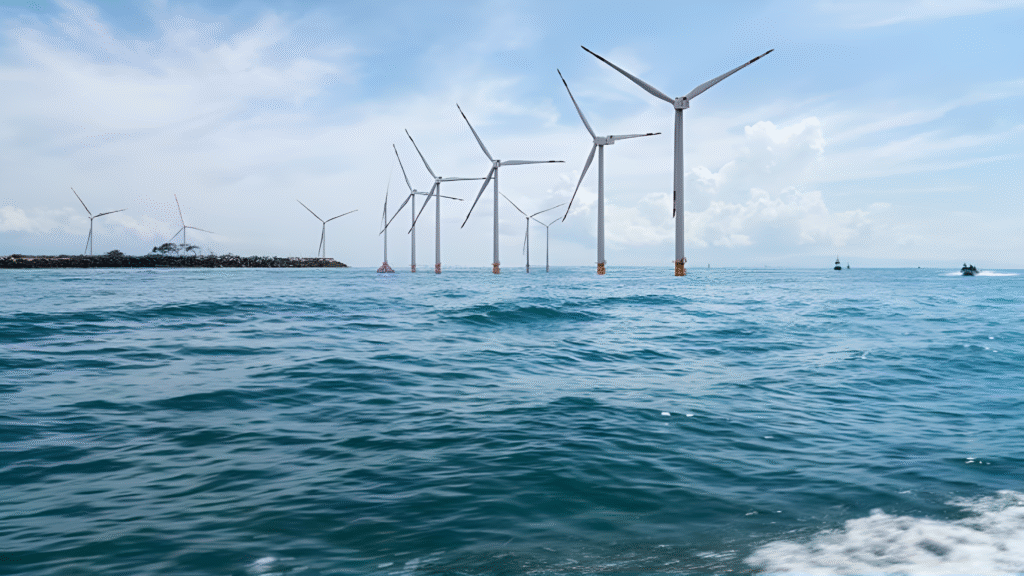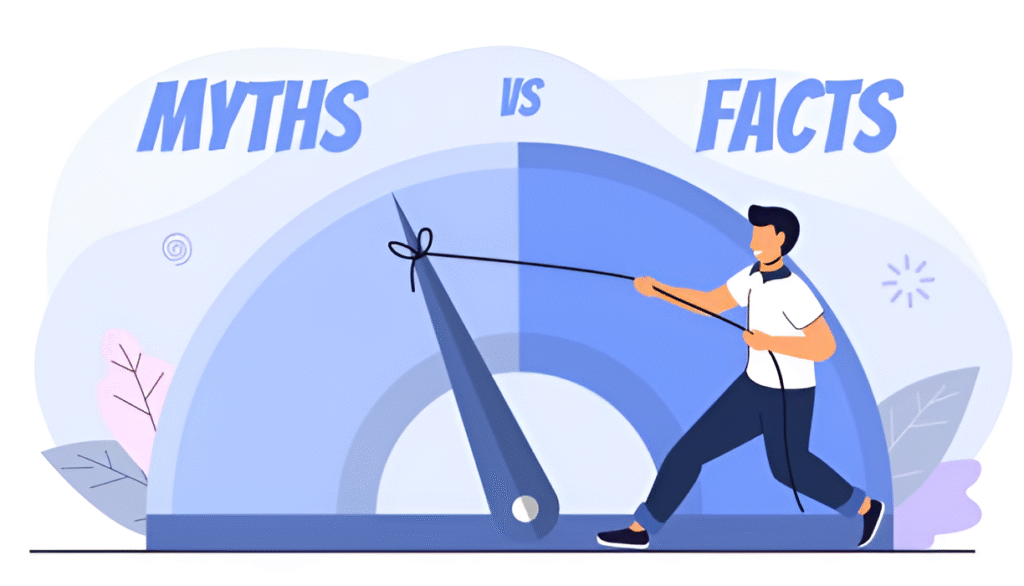Former President Donald Trump has made headlines for making bizarre claims about wind power – that turbines cause cancer, kill millions of birds and destroy property values. But today’s science and new renewable energy technologies tell a different story. In this article, we’ll fact-check Trump’s comments and debunk some of the most common wind power myths with real data, expert-researched evidence and advanced technology.
Wind power has become one of the world’s fastest-growing clean energy sources. But it’s often under attack – sometimes based on misinformation rather than truth. Wind power has been the subject of constant attacks by former US President Donald Trump, who has criticized both the technology and the return on investment in public speeches, interviews and campaign rallies. Much of his output has been fact-checked and debunked by credible outlets such as FactCheck.org, Deutsche Welle (DW), Time Magazine and Yale Climate Connection.
In this article, we take apart Trump’s most prominent claims about wind turbines and hold them up against the evidence-based (or not) record of experts.
Wind turbine And Cancer: What Technology Finds
One of the most ludicrous things I’ve heard from Donald Trump is that the sound wind mills make gives you cancer. We know that this statement may worry some of you, but medical professionals and studies say this is an entirely different story.
Health organizations and acoustics specialists who have studied the issue say they have found no credible evidence that the noise caused by wind turbines is related to cancer or any other serious illness. So while you may be able to hear the sound of turbine blades when they are close to your home and it can be an annoyance at times, the sound is not a danger to life in a biological or cancer=causing sense. They aren’t everywhere: An Iowa poll, for instance, found that opinion to be rejected by 84% of participants.
Wind turbine noise is dominated by low frequency noise and infrasound, which are found in many natural and artificial settings. Relatively exhaustive health reviews have also determined that these sounds do not lead to cancer or other life-threatening diseases.
❌ Claim 1: “The Noise from Wind Turbines Causes Cancer”
This was one of Trump’s most high-profile and controversial statements — he said that the sound from turbines can cause cancer.

🟢 The Facts:
- No study has ever linked the sound of turbines with cancer.
- This point is rejected uniformly by health experts.
In Iowa, a major wind state, 84% of the survey respondents said they disagree with that statement. Only 1% believed it.
✔ Verdict: There is no medical reason or scientific proof for this statement. At worst, the noise from turbines is a minor annoyance to some people, with no health consequences.
❌ Claim 2: ―Wind Turbines Kill Thousands of Birds, including Eagles
Trump has been known to call turbines “bird graveyards” that are causing mass avian casualties.
🟢 The Facts:
- Wind turbines are killing about 328,000 birds per year in the United States.
- In contrast, cats kill more than 2 billion birds each year, and millions more die in collisions with windows and cars.
- The wind industry is working to minimize its impact on birds, improving turbine design and location.
✔ Verdict: Bird deaths do happen, but on balance, wind turbines represent a small fraction of the human-caused dangers to them.
Are Wind Turbines Bird Murders And Value Slaughters?
Another common charge is that wind turbines are “bird graveyards,” slaughtering birds by the millions, including those from endangered species like eagles. Although wind turbines are responsible for some avian deaths, studies show that their effect is relatively insignificant compared with other causes associated with humans.
Estimates are that wind turbines kill about 328,000 birds a year in the U.S., a number that is negligible when compared to the number of birds that die from cars, buildings and cats annually — in the millions. In addition, improvements in turbine design and siting are intended to mitigate bird strikes even more.
As for property values, Trump said houses within two miles of a wind turbine lose 50 percent of their value. Yet a number of reports in various parts of the country suggest there is next to no effect on home prices. FactCheck. org; and other researchers have debunked this claim, finding that many buyers still want to live close to wind farms.

❌ Claim 3: “Turbines Drop Home Values by 50%”
Trump falsely says that living with two miles of a wind turbine can cause a home to lose half its value or more.
🟢 The Facts:
- Many real estate and economic studies have found little to no impact on property values from wind farms.
- FactCheck. org has deemed this claim “false,” referring to several peer-reviewed analyses.
✔ Verdict: No, there’s no strong evidence yet for this belief. Buyers keep buying houses close to the whirring blades and exclusive golf courses, and home prices generally remain steady.
❌Claim 4: “Wind Power Is Unreliable and Leads to Blackouts”
Doubters of wind power often cite intermittency as the problem: Wind is so unstable, they say, that it makes power grids unpredictable and unreliable.
🟢 The Facts:
- Wind power supply is limited and fluctuates by source, but utility-scale wind farms distribute output over larger geographic areas for reliable generation.
- These studies illustrate that IT systems are able to maintain the output at 10% of predicted output 80% of time for large wind network.
- Wind Installations run >98%+ of the time due to the way wind is monitored and maintenance is scheduled for most recent wind farms.
✔ Verdict: Wind can be very dependable when it becomes part of a diversified and modern grid.
❌ Claim 5: “The Production of Wind Turbines Produces So Much CO₂, It Undoes any Benefits”
Trump has also said that the production and the transport of wind turbines create so many emissions that the environmental benefits are “wiped out.”
🟢 The Facts:
Life-cycle assessments — of manufacturing, installation, operation and disposal — demonstrate that wind energy produces significantly less carbon than fossil fuels do.
On average:
- Wind: 3–12 g CO₂/kWh
- Natural gas: ~37× more
- Coal: ~77× more
✔Verdict: Even taking all emissions from the manufacturing process into account, wind is one of the least damaging forms of power.
Why are These Myths Still Around?
Studies published in Nature and Yale Climate Communications indicated that belief in myths about wind energy tends to accompany wider conspiratorial thinking and political views.
Key findings:
- About 25% of people buy into one or more false claims about wind energy.
- Note that misinformation spreads more effectively when it is amplified by public figures.
- People who believe one myth are likely to embrace others.
How to Fact-Check Anybody

To avoid being taken in by misinformation:
- Turn to credible, science-based sources: FactCheck. org, Yale Climate Connections, NREL, DW, IPCC.
- Ask critical questions: Is this claim from a peer-reviewed study?
- Cross reference from more than 1 source.
The Summary: What the Science Says
| Trump’s Claim | Reality |
| Noise causes cancer | No medical link—myth |
| Wind kills many birds | Least of all other causes |
| Home values drop 50% | No significant effect proven |
| Wind is unreliable | Wind is well managed in the modern grids |
| Fumes cancel wind’s benefits | Wind is 37–77 times more clean than gas/coal |
Final Word: Wind Power Matters Still
Even in the face of disinformation campaigns, the scientific and environmental argument for wind power is strong:
- Safe – No association with health risks like cancer
- Green – Low bird kills with enhancements in the making
- Fiscally Responsible – Little to no impact on property Values of those near by
- Dependable – Fully integrated into the power systems of today’s world
- Green – Lowest CO₂ emissions of any energy source
As wind power grows around the world, the focus must be on facts, not fear, in public discussions.
Stay informed. Stay skeptical. And always check the source.
For more, read: Yale Climate Connections, Fact-Check. org, and NREL. gov.
